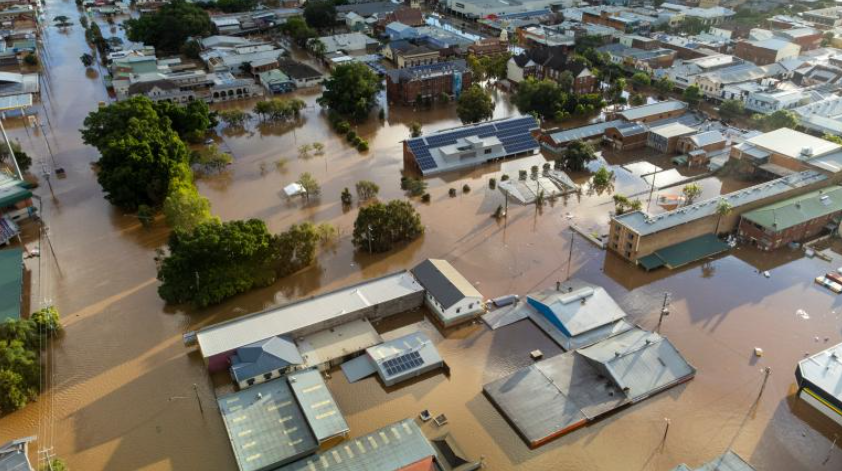WESF plays a role in promoting standardization and eliminating global trade barriers.
Urban resilience is essential to outpacing climate change impacts, with electricity access and standards at its core. A new IEC and ISO committee has been formed to deal with some aspects of disaster prevention.

With record temperatures, heatwaves and flooding dominating the headlines in recent years, we may be forgiven for believing that as there are more natural disasters, there are more deaths as result. That is not the case. In the 1920s, the average number of deaths from disasters per year was around 500 000, according to this report from the progressive policy institute. These days, it’s around 40 000 to 50 000, which is an improvement, though still a significant number.
Better medical care, scientific meteorological systems and improved coordination between rescue services and even nations can in part explain the improvement. While the human cost may be lower, the economic consequences remain monumental. Globally, the annual costs of natural disasters are tipped to be over USD 2,3 trillion per year when cascading and ecosystem costs are taken into account.
While we can’t control the weather, there is a lot we can do to limit its impact. Improved technology, a resilient electricity network and better weather forecasting have already shown results. However, with climate change impacts a growing threat, there is a need to keep evolving to not reverse this trend.
Standards are fundamental to this process, so much so that the United Nations Office for Disaster Risk Reduction (UNDRR) Global Assessment Report on Disaster Risk Reduction 2025 states: “Governments can lead by embedding sustainable disaster risk financing strategies into their operations and by mandating resilience standards are applied in public infrastructure and investment.”
Cities, too, have a vital role to play, given that they are home to more than half the world’s population, which is one of the reasons why UNDRR launched the Making Cities Resilient 2030 initiative. Its aim is to improve local resilience through providing tools, knowledge and the establishment of city-to-city networks.
This year’s UN World Cities Day, held on 31 October, focuses on how collaboration and putting people at the centre of smart cities are vital for improving urban living and building resilience.
Electricity fuels virtually every vital service needed for disaster recovery, such as telecommunications, transport, water supply and hospitals, so a back-up source is essential when the grid goes down.
It is this concept of city service continuity (CSC) against disasters that is outlined in the standard IEC 63152:2020, Smart cities – City service continuity against disasters – The role of the electrical supply. It helps city operators, essential service providers and disaster management personnel ensure that city services can be sustained when the power supply from the grid is discontinued because of disasters. The accompanying standard, IEC SRD 63152, provides guidance on implementing the CSC and includes city service cases for various organizations such as town developers and municipalities.
One approach to increasing urban resilience that is gaining traction is the idea of decentralizing energy supplies, so that if one part of a city’s electricity goes down, another area can step in to help. This is being seen in a growing number of positive energy districts (PED), which are areas within a city’s boundaries capable of generating more energy than they consume. They use smart technology to control and optimize energy use, including digital twins to simulate how services can function well together. The use of microgrids is also one of the ways of going about it. (For more on this aspect read: Building-resilience-into-the-grid.)
The PED model is being promoted by the International Energy Agency globally, and through the collaboration and interaction it engenders, it will help build resilience in cities. “The idea is that a city will become full of PEDs, all working together towards that one focus,” says smart cities expert Michael Mulquin. Mulquin, who is Chair of the IEC Systems Committee for Smart Cities (SyC Smart Cities), has spent nearly 30 years partnering with cities, rural areas and industry on how technology can help them work better.
The IEC SyC Smart Cities is also working on a Technology Report which aims to introduce the concept and related cases of PED and current standardization work in the area. It intends to promote the advantages for standards developers to get involved in this field. The report will also provide the basis for the SyC Smart Cities to develop a programme of work to help identify standards gaps and support the development and promotion of standards needed for PEDs.
Cities are complex systems of systems, says Mulquin, so sharing information between different services is necessary for resilience, but challenging. “Cities collect a lot of data that help them with decisions, such as managing traffic flows or water supply,” he explains. “But the different services don’t generally share that information with other services, because most of the time it’s not necessary. In a disaster, however, this kind of sharing could be vital to getting essential services up and running more quickly.”
Recognizing the importance of such collaboration within and between cities, and the urgent need for international standards to support them, the IEC has recently joined forces with ISO to create a new joint technical committee, ISO/IEC JTC 4, Smart and sustainable cities and communities. The committee brings together and builds on the existing work of IEC and ISO to foster the development of standards in fields such as sustainability, community infrastructure, digitalization, and more. Its scope also includes resilience and disaster risk reduction.
Mulquin says the committee recognizes the plethora of standards that can help cities strengthen their resilience to disasters and respond more effectively should they occur. Yet, all too often, cities don’t know where to start. “Integration is needed, which is why JTC 4 was developed, bringing together all the different kinds of expertise needed to provide practical tools to help future-proof cities,” he concludes.